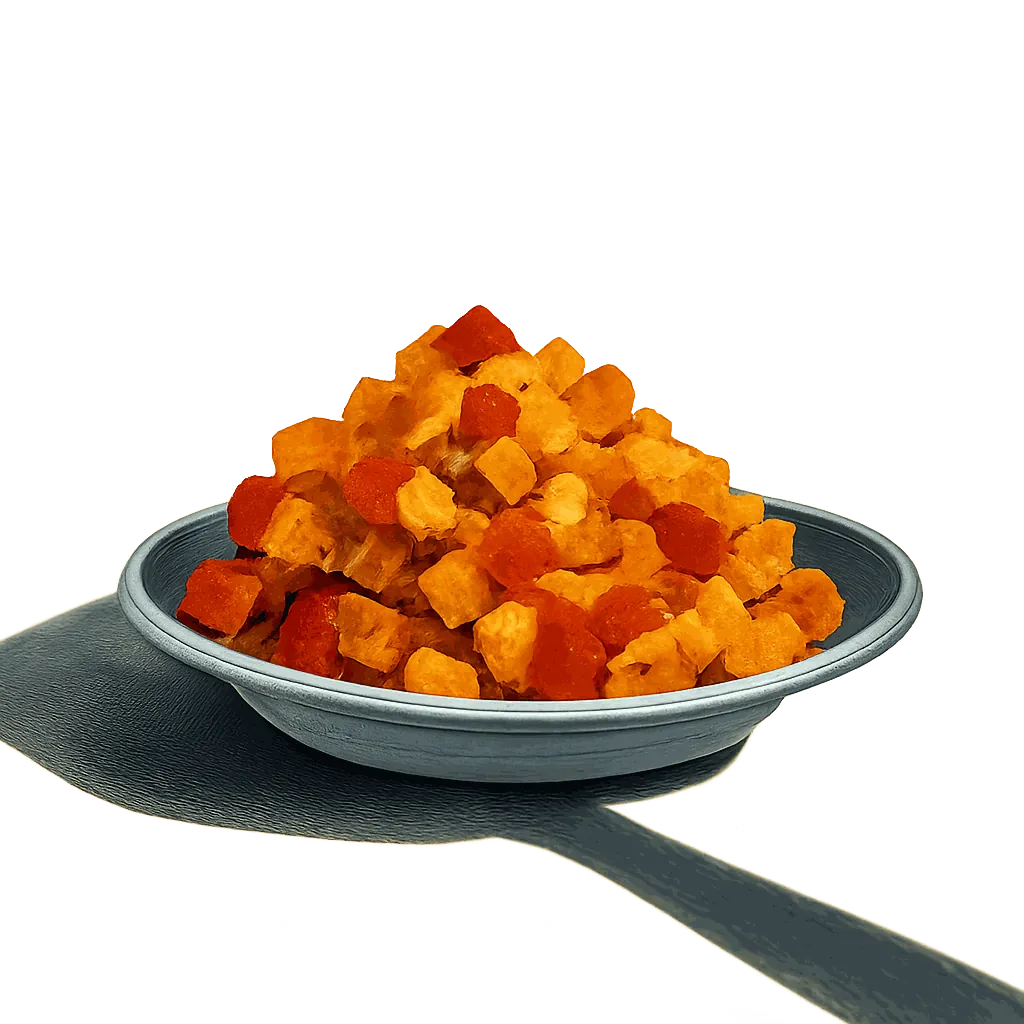Perfect Pairings & Recipes for
Mixed Peel

Exquisite mixed peel flavour pairings and recipes, revealed through data science.
Mixed peel is defined by the unmistakable flavours of neroli and cedar, but beneath its bitter surface lies a nuanced symphony of subtle flavour notes: honey, blossom, and even hints of grapefruit that contribute remarkable depth. The key to a beautiful pairing lies in knowing how these notes work together.
To map these harmonies, we analysed thousands of ingredients, breaking each one down across 150 flavour dimensions, identifying which notes complement and contrast. Our analysis reveals, for example, how suet's adipose tones enrich mixed peel, and how date's ficus notes create a surprising synergy with its citrusy brightness.
Flavour Profile Of Mixed Peel Across 150 Dimensions Of Flavour
Flavour wheel chart showing the dominant flavour notes of Mixed peel: Neroli, Honeyed, Cedar, Grapefruit, Blossom, Sugary, Caramel, Resinous, Passionfruit, Malic, Cinchona
An ingredient's flavour comes from its core characteristics, like floral, acidic, and nectarous, combined with its unique aroma notes (outer bars). When pairing ingredients, aim to include a broad variety of core characteristics for a balanced dish. And choose aroma notes that complement each other for a harmonious combination.
The Secret Language of Flavour
To understand exactly which flavours harmonise, we compiled a database of over 50,000 ingredient pairings commonly used in cooking. We then analysed these pairings, identifying the specific flavour notes that frequently appear together.
The Flavours That Harmonise With Neroli Notes
Strength of Association Between Flavours
The flavours most associated with neroli notes are: Gentian, Limestone, Ficus, Malic, Raisin, Blackberry, Molasses, Vanilla, Sugary, Tannic, Raspberry, Violet, Cherry, Pear, Plum.
Our analysis shows that the flavour of neroli is strongly associated with the flavour of fig. This suggests we should look for ingredients with a ficus flavour, such as date, when pairing with the orangey accents of mixed peel.
The recipe below provides inspiration for pairing mixed peel with date.
Harmonious Flavours Of Mixed Peel
Just as our analysis revealed that neroli and gentian flavours are often combined, we can identify the full profile of flavours that harmonise with each of the flavours present in mixed peel. For instance, the honeyed accents of mixed peel are strongly associated with milky and cedar accents.
The notes linked to the various aromas of mixed peel can be seen highlighted in the pink bars below.
Flavour Profile Of Mixed Peel And Its Complementary Flavour Notes
Flavour wheel chart showing the dominant flavour notes of Mixed peel: Neroli, Honeyed, Cedar, Grapefruit, Blossom, Sugary, Caramel, Resinous, Passionfruit, Malic, Cinchona
Matching Flavour Profiles
The flavour profile of suet offers many of the accents complementary to mixed peel, including fatty and glutamic accents. Because the flavour profile of suet has many of the of the features that are complementary to mixed peel, they are likely to pair very well together.
Prominent Flavour Notes Of Suet Are Represented By Longer Bars
Flavour wheel chart showing the dominant flavour notes of Suet: Adipose, Glutamic, Buttery, Proteolytic, Musky, Oleic, Petrichor, Bovine, Lactic, Milky, Butyric, Poultry, Grassy, Porcine
The chart above shows the unique profile of suet across 150 dimensions of flavour, while the recipes below offer inspiration for bringing these flavours together with mixed peel.
Linked Flavour Notes
Looking at the aroma notes that are most strongly associated with the various flavours of mixed peel, we can identify other ingredients that are likely to pair well.
Mixed Peel's Harmonious Flavours And Complementary Ingredients
Mixed peel's Strongest Flavours
Complementary Flavours
Ingredients with Complementary Flavours
Flavour groups:
Nectarous
Acidic
Floral
Herbal
Spice
Vegetal
Maillard
Earthy
Carnal
The left side of the chart above highlights the aroma notes of mixed peel, along with the complementary aromas associated with each note. While the right side shows some of the ingredients that share many of the aromas complementary to mixed peel.
What To Drink With Mixed Peel
The gentian notes in cynar make it a perfect pairing with mixed peel. Likewise, the gentian flavours in campari create a match made in heaven. Explore a variety of ingredients below that beautifully complement the unique character of mixed peel below.
How Flavonomics Works
We've pioneered a unique, data-driven approach to decode the intricate art of flavour pairing. Our goal is to move beyond intuition and uncover the science of why certain ingredients harmonise beautifully. This rigorous methodology allows us to provide you with insightful and reliable pairing recommendations.
Our analysis begins with over 50,000 carefully selected recipes from acclaimed chefs like Galton Blackiston, Marcello Tully, and Pierre Lambinon. This premium dataset ensures our model distils genuine culinary excellence and creativity.
Each ingredient from these recipes is deconstructed across 150 distinct flavour dimensions, creating a unique numerical "flavour fingerprint." This quantification allows us to apply advanced analytical methods to identify complex patterns between flavour notes.
We identify popular ingredient combinations that frequently appear in our recipe database. Regression analysis is then performed on these pairings to statistically validate and pinpoint truly harmonious flavours.
These insights drive our predictive model, which allows us to take any ingredient (e.g., Mixed peel), analyse its detailed flavour profile, and accurately reveal its complementary flavours and perfect ingredient partners.
Explore More
Discover more ingredient profiles and expand your culinary knowledge. Each ingredient page offers detailed analysis of flavour profiles, pairing insights, and culinary applications.
The content on our analysis blog is semi-automated. All of the words were manually written by a human, but the content is updated dynamically based on the data.


